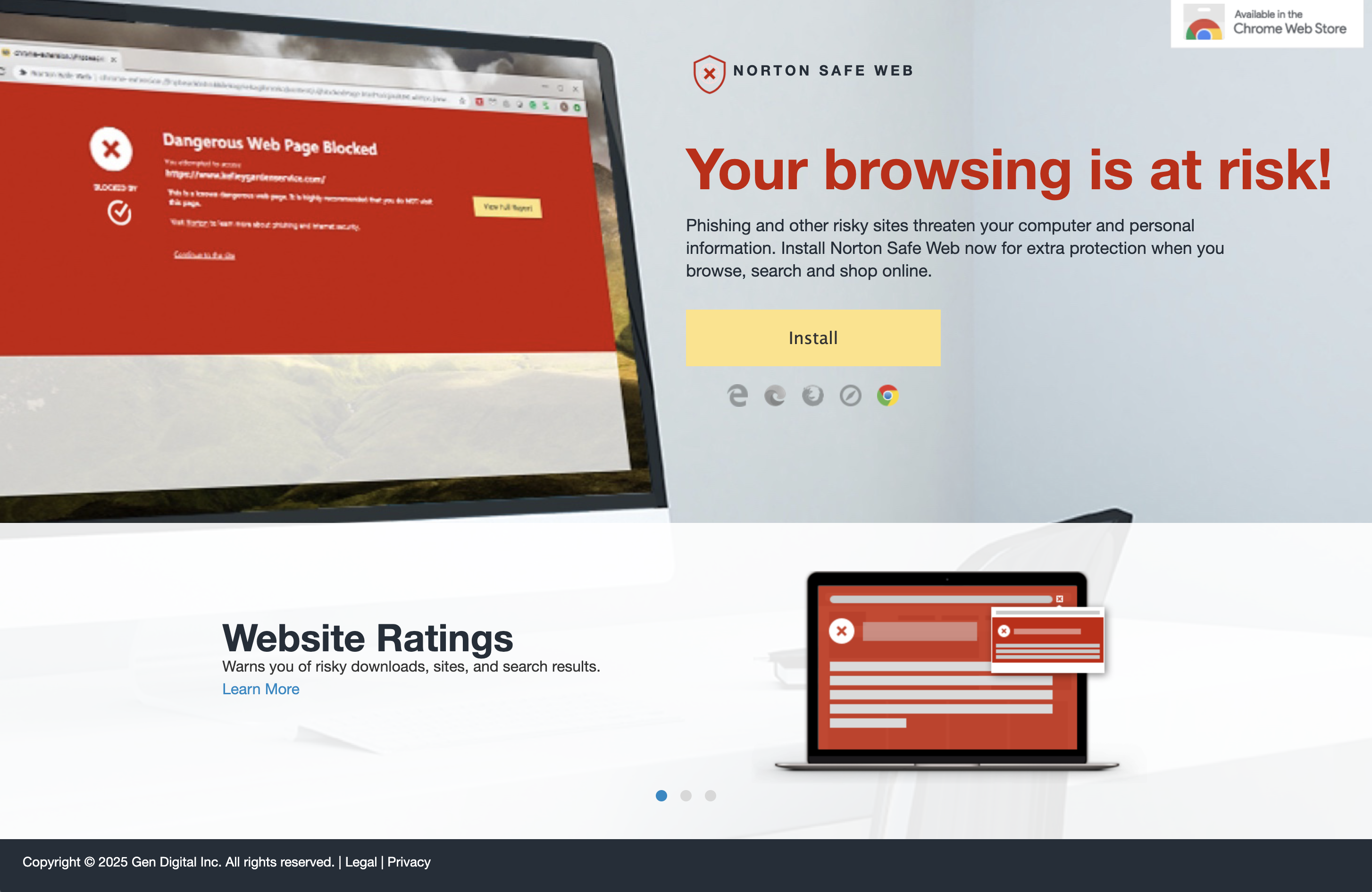Norton LifeLock (formerly Symantec and now Gen) is a brand centered on comprehensive digital security, known for products like Norton Anti-Virus and an array of mobile security solutions. Norton ConnectSafe was a simple browser extension that helped keep users safe while browsing websites.
Designed the extension warning and dispute flows, from wireframing to handoff and launch
1 week to design and handoff
1 PM and 3 devs
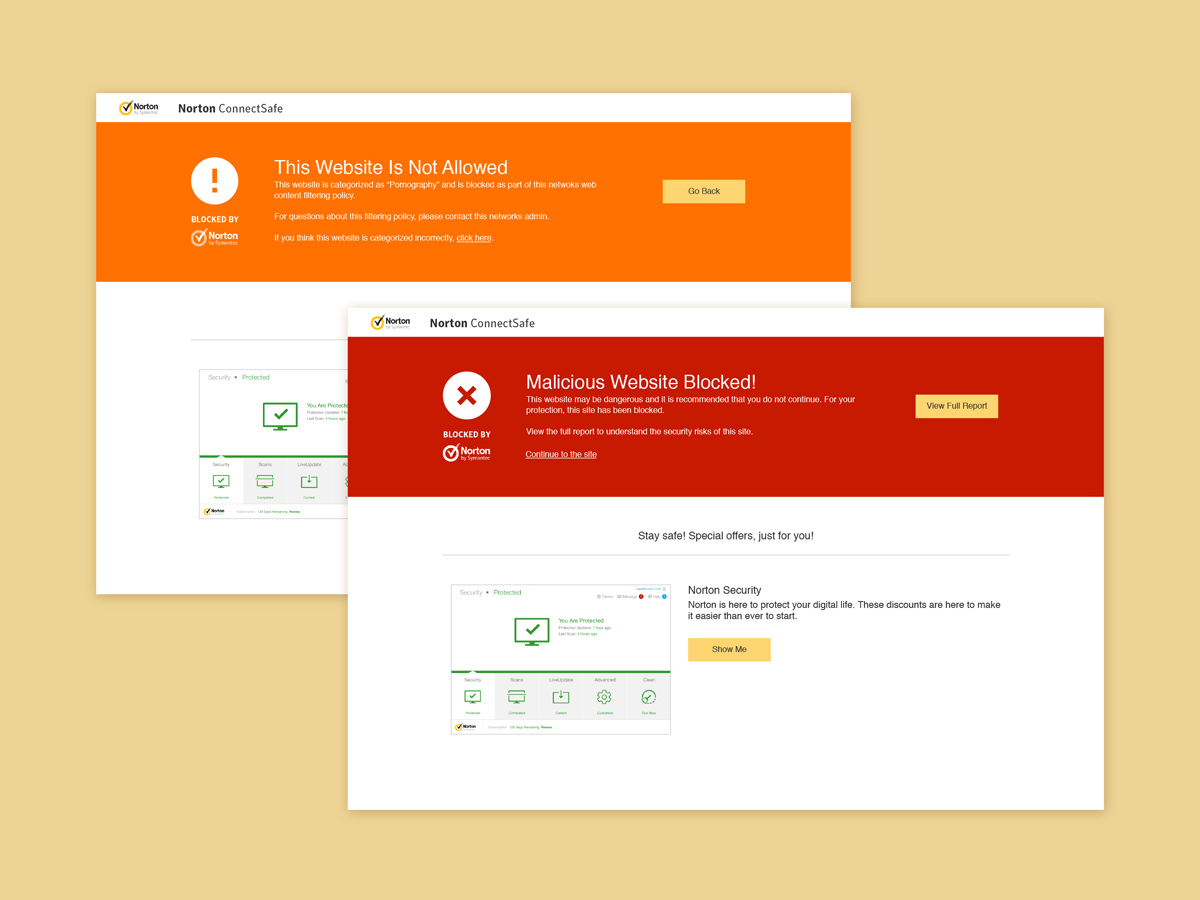
One of Norton's web-based products, ConnectSafe, helped protect users while browsing online. When a user attempted to visit a potentially unsafe or known malicious site, they're redirected to a warning block page to prevent further risk.
The problem: Users did not have a choice to add sites to a safe list, or to dispute a site's malicious/possibly malicious category.
The goal: The primary goal was to design a simple, intuitive way for users to dispute a site's assigned category. A key constraint was maintaining the existing design and layout of the live ConnectSafe site, working with the then live site framework to introduce this new functionality.
One of my early projects at Norton (formerly Symantec) involved addressing a user experience issue with the ConnectSafe browser extension. The product team noticed a high number of users disabling the extension after encountering the warning screen for potentially malicious sites. It became clear that users were doing this simply to bypass the block.
After collaborating with the product team, we proposed a lightweight solution: a modal that allowed users to submit sites to a personal "safe list." This approach preserved the extension’s protective functionality while reducing user frustration. It also provided the business with a quick, low-impact fix that fit within broader product priorities.
Wireframing: The solution seemed so simple, yet we wanted to take precaution before mock-ups. We ended up working within the given restriction and drafted up wireframes so all parties could agree before mocks and quick handoffs.
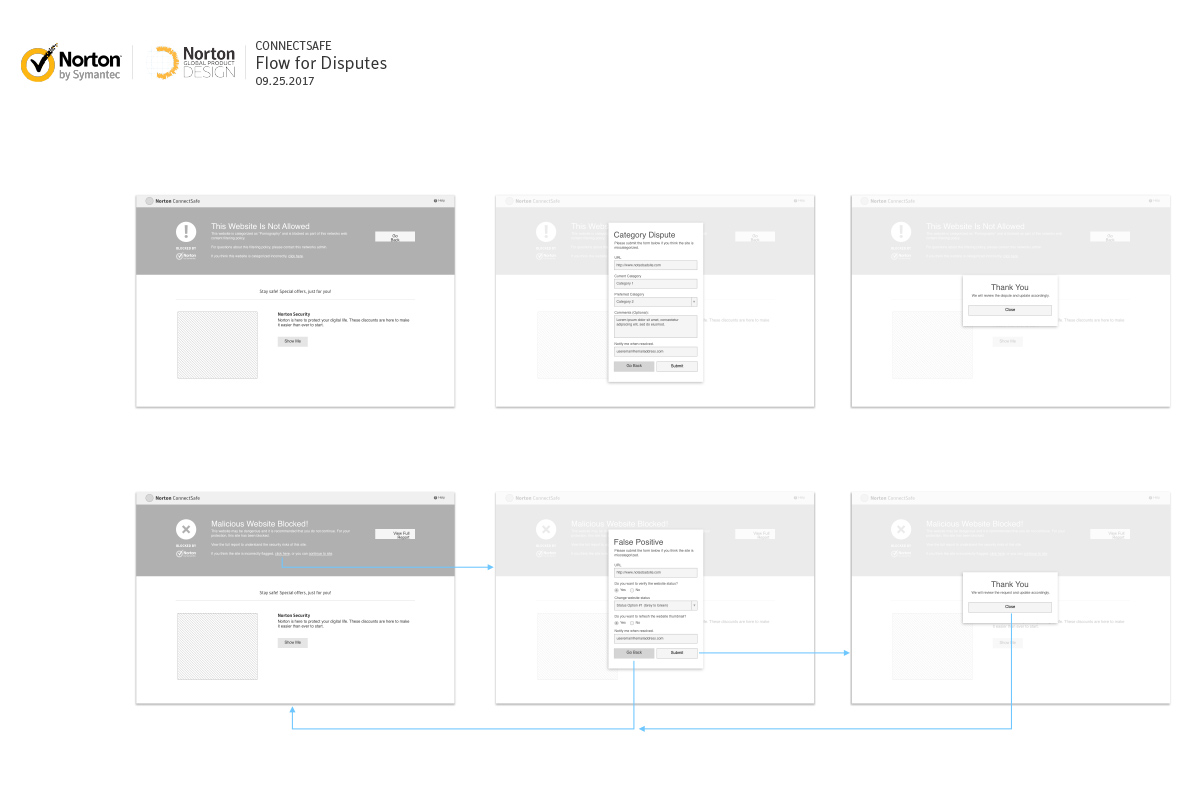
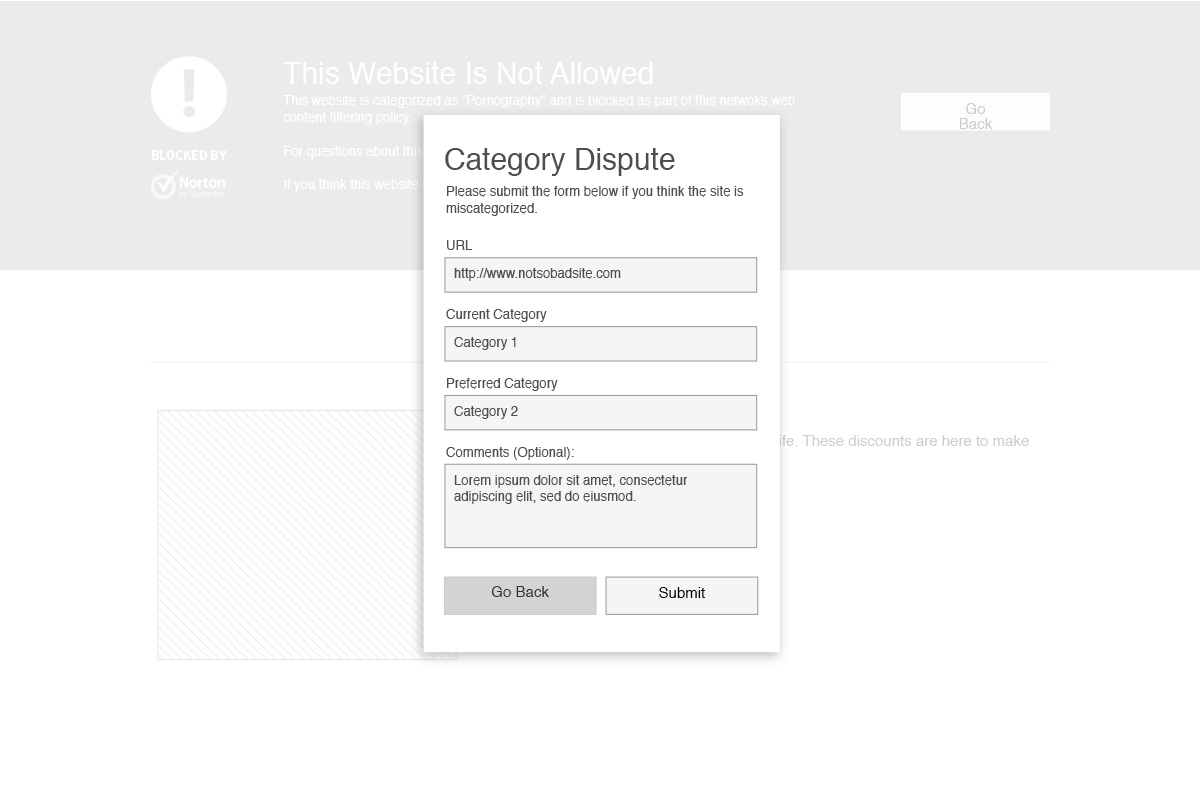
We quickly ran through wireframe critiques, and once we ran through every scenario we could to make it fire and error proof, we moved quickly into mock iterations before handoffs.
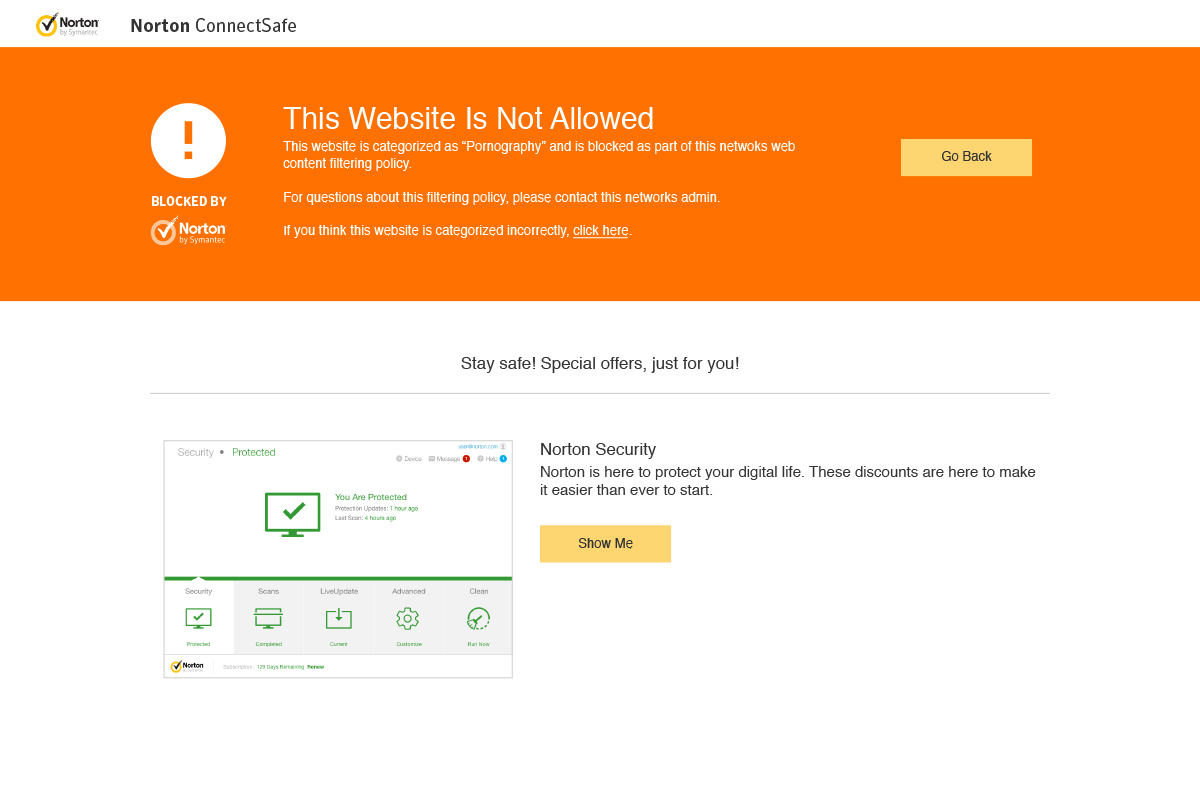
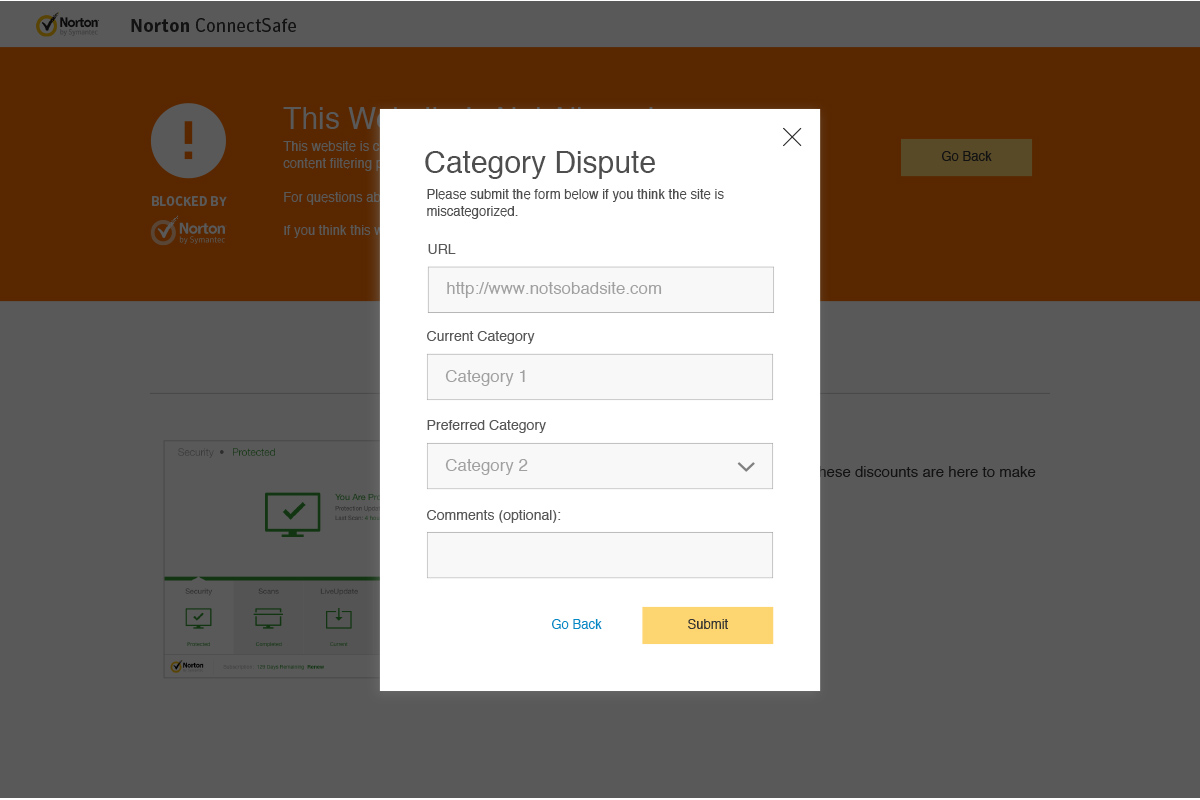
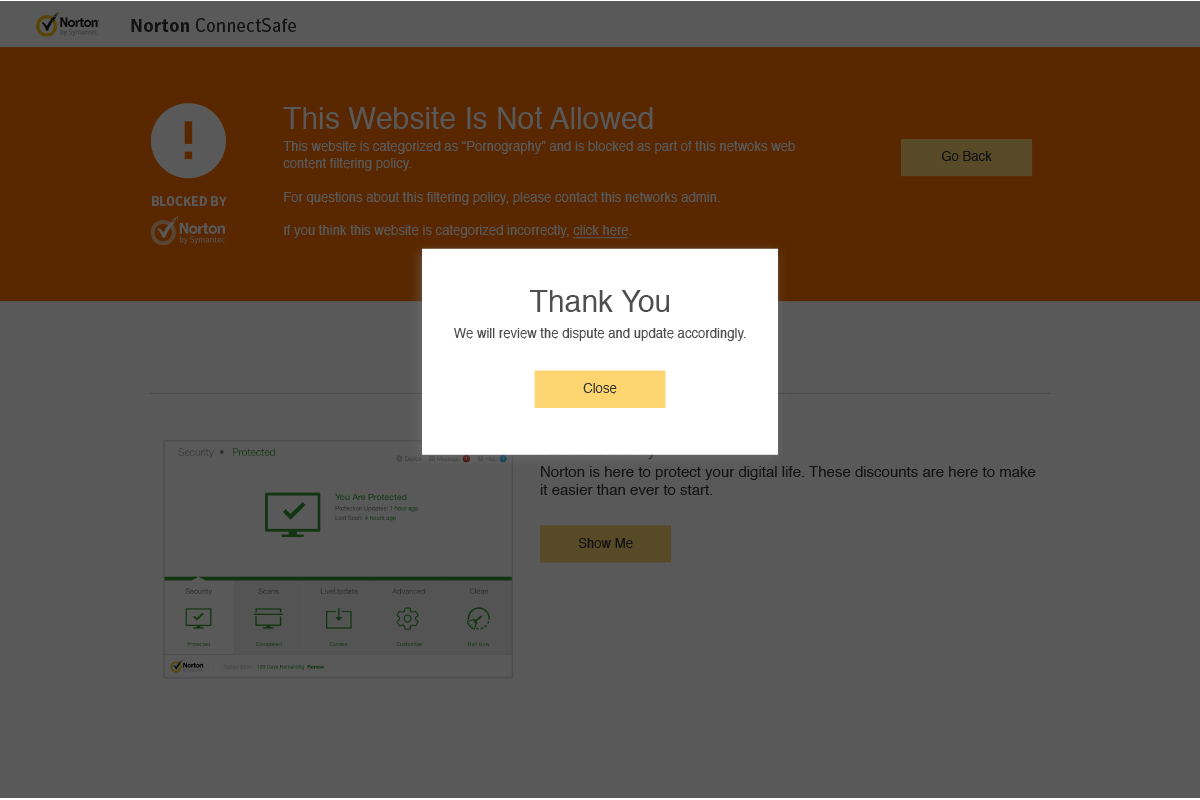
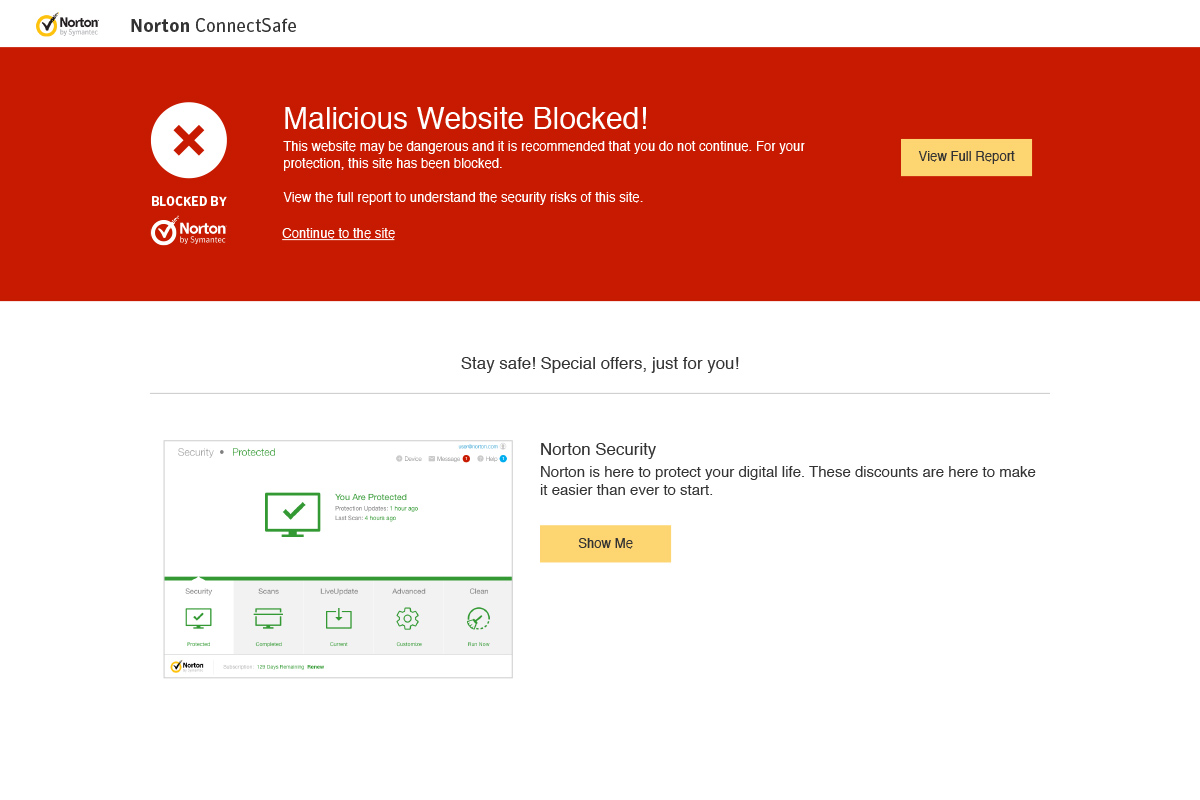


The update alleviated the pains that users were going through, and the update was deemed a success! We saw that users were no longer disabling the feature - however, business has since renamed the tool as "Norton Safe Web" as it was more fitting for browser protection.
